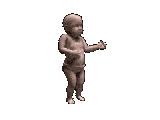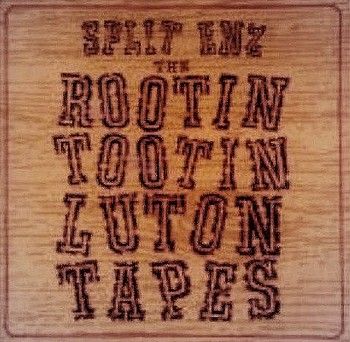
Tony Scott featuring Jan Akkerman - Prism - 1977 - Polydor
Nobody new what was going to happen on the 17 June at the Soundpush Studios in Holland. Jan Akkerman, ex-FOCUS, nominated best guitar player in the world and Tony Scott, clarinet pollwinner for more than a decade and globetrotter, first met on the night before although it became a lively evening due to the eloquence of both parties and the “high spirits”, no mention was made of the recording on the morrow. Since I was the originator of this totally improvised session I have to admit that I felt a bit uncomfortable. I shouldn’t have worried. From the moment those two headstrong musical magicians entered the dim lit studio an atmosphere of high tension pervaded the air and as the tape started rolling and the incense burned, great sounds started coming from Jan, behind his double-barrelled guitar and switchboard, and Tony in his favourite Lotus position, dressed in black, humming and playing. Bass player Wim Essed and drummer Bruno Castellucci supplied a perfect smooth wall to wall carpet for the two genii to float on". © Cees Schrama [from liner notes]
The late Italian/American clarinetist Tony Scott recorded this album with Jan Akkerman in 1977. The album was re-released in 1988 with the title, "Meditation". "Prism" is a very good album. Tony Scott was playing with more passion and less moderation and spacy effects than most of his other "meditation" style albums. Consequently, the album has more punch and tougher solos than usual. The album has been described as "free jazz" and "electronic jazz fusion", but is probably more in the “New Age” mould than jazz or jazz fusion, The music is not centred around Jan Akkerman's guitar playing, but what Jan plays is up to his usual standard of excellence, and the album should appeal to jazz lovers. Jan Akkerman is one of the most innovative and influential guitarists of modern times. He was once selected as the world's greatest guitarist by the influential British rock publication, Melody Maker. Often, these accolades are unmerited and artificial, and do not always reflect true ability, but in Jan Akkerman's case, the title was richly deserved. Jan has proved his greatness with bands like the Hunters, Brainbox and the great Focus. Most of his solo works are marvellous works of originality, incredible guitar technique, and cover ever musical genre. He is one of the very few guitarists who can play any style of music equally well, anything from rock and blues to Spanish and classical. As stated before on this blog, the terms, world's greatest guitarist, best guitarist of all time, etc, etc, are "bandied" around a lot. However if we take some of the definitions of great, like "of outstanding significance or importance", "superior in quality or character", "powerful; influential", or "remarkable or out of the ordinary in degree or magnitude or effect", then Jan Akkerman is truly a great guitarist, as all the aforementioned definitions apply to Jan's playing. "I just don't live a very regular life. That's true. For instance, I don't even wear a watch. But I'm very much disciplined as far as playing the guitar is concerned". "Disciplined" is just one of many words that could be applied to Jan Akkermans playing !" Listen to Tony Scott's "A Jazz Life" album, and Jan Akkerman's outstanding "Tabernakel" album. If you haven't heard Jan's guitar playing on Focus' "Live At The Rainbow" album don't waste any more time and give it a listen! Search this blog for more Jan Akkerman related releases [Tracks @ 253-256 Kbps: File size = 84 Mb]
TRACKS
1 Silmarillion
2 The Offering
3 Blues Blues Blues And Then Some More Blues
4 Under The Bo Tree
All tracks composed by Tony Scott & Jan Akkerman except "Blues Blues Blues And Then Some More Blues" by Tony Scott & Cees Schrama
MUSICIANS
Jan Akkerman - Electric Guitar
Wim Essed - Bass
Cees Schrama - Piano
Bruno Castellucci - Drums
Tony Scott - Clarinet, Vocals
ABOUT TONY SCOTT (WIKI)
Tony Scott (born Anthony Joseph Sciacca June 17, 1921 - March 28, 2007) was a jazz clarinetist known for an interest in folk music around the world. For most of his career he was held in some esteem in New Age music circles because of his decades-long involvement in music linked to Asian cultures and to meditation. Born in Morristown, New Jersey, Scott attended Juilliard School from 1940 to 1942. In the 1950s he worked with Sarah Vaughan and Billie Holiday. He also had a young Bill Evans as a side-man. In the late 1950s he won on four occasions the Down Beat critics poll for clarinetist in 1955, 1957, 1958 and 1959 He was known for a more "cool" style than Buddy DeFranco.Despite this he remained relatively little-known as the clarinet had been in eclipse in jazz since the emergence of bebop. In 1959 he left New York City, where he had been based, and abandoned the United States for a time. In the 1960s he toured South, East, and Southeast Asia. This led to his playing in a Hindu temple, spending time in Japan, and releasing Music for Zen Meditation in 1964 for Verve Records. In 1960 a Down Beat poll for Japan saw readers there name him best clarinetist while the United States preferred Buddy DeFranco. More recently he did a Japanese special on Buddhism and Jazz, although he continued to work with American jazz musicians and played at the Newport Jazz Festival in 1965. In 1967 he put out his first album in eight years entitled Tony Scott: Homage To Lord Krishna. In the years following that he worked in Germany, Africa, and at times in South America. He settled in Italy in the 1980s, working with Italian jazz musicians such as Franco D'Andrea and Romano Mussolini. In later years he began showing an interest in Electronica and in 2002 his Hare Krishna was remixed by King Britt as a contribution to Verve Remixed. In 2010, a documentary film by the Italian director Franco Maresco about the life of Tony Scott was released titled Io sono Tony Scott, ovvero come l'Italia fece fuori il più grande clarinettista del jazz (English: I am Tony Scott. The Story of How Italy Got Rid of the Greatest Jazz Clarinetist)
ABOUT JAN AKKERMAN
A musician of nearly legendary prowess, Jan Akkerman for a time eclipsed Eric Clapton, Jimmy Page, and Jeff Beck among reader polls in England as the top guitarist in the world. Akkerman was born in Amsterdam, Holland, and showed his musical inclinations early, taking up the guitar while still in grade school. His taste and interests were extraordinarily wide-ranging, from pop/rock to classical, with room for blues, Latin, and other influences. He joined his first band, Johnny & His Cellar Rockers, in 1958, at age 11, which included his boyhood friend Pierre van der Linden on drums. Later on, the two were members of the Hunters, an instrumental group whose sound was heavily influenced by that of the Shadows. He acquired a special interest in the lute while on a visit to England during the mid-'60s, during which he saw a performance by legendary classical guitarist Julian Bream, whose repertoire of medieval works also fascinated Akkerman. This interest, which broadened to embrace a fixation on medieval England and its countryside, later manifested itself in such works as "Elspeth of Nottingham" from Focus III. During the late '60s, Akkerman, van der Linden, bassist Bert Ruiter, and singer Kaz Lux formed Brainbox, who were good enough to get a recording contract with Parlophone Records. He was involved with an early incarnation of the group Focus, founded by conservatory-trained flutist Thijs Van Leer, but didn't join until after that group had issued its unsuccessful debut album -- he took Van der Linden with him from Brainbox and, with Van Leer and bassist Cyril Havermans (later succeeded by Ruiter) from the original Focus, formed a new group of that name. With Akkerman's virtuoso guitar work and arrangements coupled to Van Leer's classical influence (and his yodeling on their breakthrough hit, "Hocus Pocus"), the new group found a large international audience beginning in 1972, which transformed Akkerman into a superstar guitarist. His solo career actually dated from 1968, though his attempt at a solo album, later titled Guitar for Sale -- containing his covers of numbers such as "What'd I Say," "Ode to Billy Joe," and "Green Onions" -- was so primitive by the standards of the time that it was deemed unreleasable until Akkerman started topping reader surveys in the mid-'70s. Profile, released in 1972 after he'd begun making some headway with his reputation, also dated from 1969 and his days with Brainbox. Akkerman's first real solo album reflecting his music and interests at the time appeared in 1974, in the form of Tabernakel, which was recorded during the summer of that year at Atlantic Recording Studios in New York -- having finally acquired a medieval lute of his own, he taught himself to play it and the results comprise more than half of this LP, made up of authentic medieval music and originals composed in a medieval mode. It was certainly the most unusual record ever to feature the playing of Tim Bogart (bass) and Carmine Appice (drums), as well as soul drummer Ray Lucas. After leaving Focus in 1976, Akkerman began releasing a stream of solo albums, which frequently embraced classical, jazz, and blues, and started leading his own bands. Much of his work during the 1980s wasn't released officially outside of Holland, but his periodic recordings with Van Leer, coupled with efforts to revive Focus with its two major stars, kept his name circulating in international music circles. The only problem that Akkerman faces derives from the sheer eclecticism of his work, which makes him very difficult to categorize -- two different branches of Tower Records in the same city listed him as a jazz and a rock artist, respectively, but one could just as easily make a claim for him as a classical artist. © Bruce Eder © 2011 Rovi Corporation. All Rights Reserved http://www.allmusic.com/artist/jan-akkerman-p3516/biography





